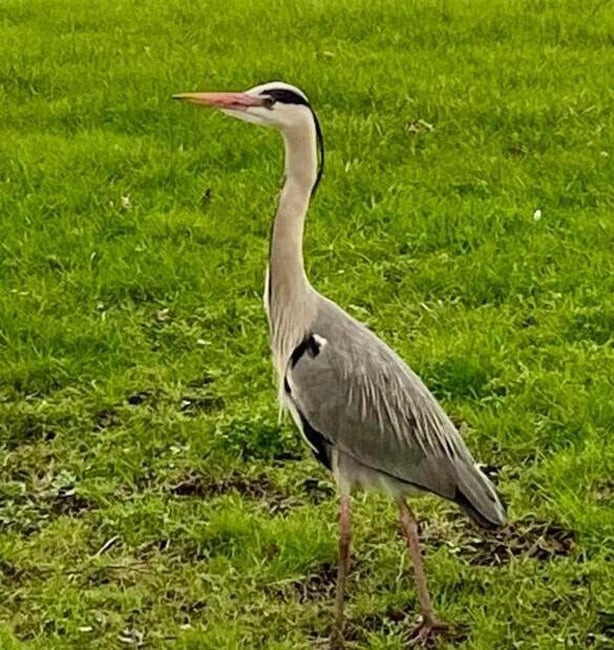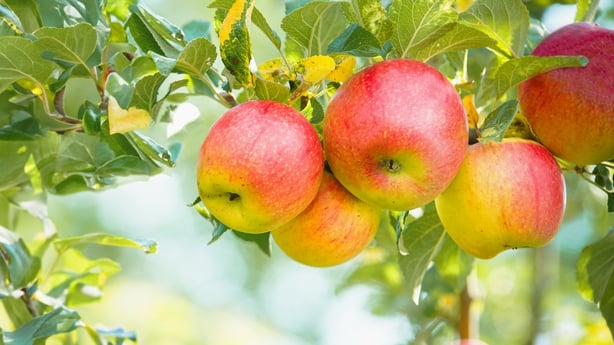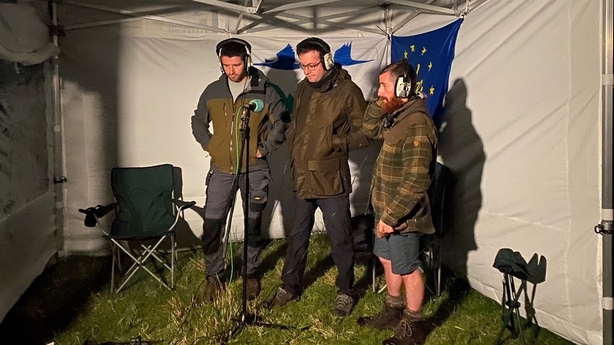To listen to RTÉ.ie's radio and podcast services, you will need to disable any ad blocking extensions or whitelist this site.

0
00:00
00:00
Episode Notes
Panel: Richard Collins
Reporter: Terry Flanagan
Interviewer: Éanna Ní Lamhna
In addition to listening to us on RTÉ Radio One at 22:00 every Monday night, don't forget that you can also listen back to each of our programmes any time you like at https://rte.ie/mooney. There, you will find an extensive archive of past broadcasts, conveniently split into different topics and segments.
Tonight’s programme features an interview with Prof. Brendan Kavanagh, Ireland’s leading expert on Magpies. Our suggestion this week from the Mooney Goes Wild archives, therefore, is a segment we recorded with Brendan back in August 2014, all about whether or not the reputation these clever black-and-white members of the crow family have for stealing shiny objects is deserved.
To listen to this clip from the Mooney Goes Wild archives, visit
https://www.rte.ie/radio/radio1/clips/20639944/
Grey Heron in Fairview Park

On one of their regular strolls through Dublin’s Fairview Park, Derek and Richard came across a curious noise: the unmistakable guttural call of a Grey Heron. Strange as it may seem, these long-necked, long-legged waterbirds nest colonially high in the treetops, and Fairview Park is home to a breeding colony of these elegant creatures. The park’s proximity both to the River Tolka and to North Bull Island and the rest of Dublin Bay means that it is an ideal location for the herons, offering both secure nesting sites and easy access to rich feeding opportunities.
Fairview Park is located close to Clontarf, just to the north of Dublin city centre. Clocking in at 20 hectares, it was developed on reclaimed land and features some very eye-catching and diverse planting display. It is well worth a visit if you happen to be in the area.
For more information about Grey Herons, visit
https://birdwatchireland.ie/birds/grey-heron/
For more information about Fairview Park, visit
https://www.visitdublin.com/fairview-park
One for sorrow, two for joy
At this time of year, Magpies can frequently be seen carrying large sticks as they fly back and forth in our cities, towns, suburbs and countryside. The only reason they would do such a thing is for the purposes of nest-building, and this is exactly what these exceptionally smart members of the crow family are doing.
The intelligence of Magpies is legendary. As Richard tells us on tonight’s programme, they are one of the few animals that has proved to be capable of recognising themselves in a mirror. Most creatures, including dogs and cats, fail miserably at this, believing that their reflection is in fact a completely different individual, but Magpies are not so easily fooled. This suggests that they possibly have at least some degree of self-awareness, a trait that biologists once mistakenly believed was confined to humans.
Prof. Brendan Kavanagh is Ireland’s leading Magpie expert, having studied the species for many years. On tonight’s programme, Brendan joins us from his home in Kilcullen, Co. Kildare to tell us more about these remarkably interesting, clever and much-maligned birds.
For more information about Magpies, visit
https://birdwatchireland.ie/birds/magpie/
For more information about Prof. Brendan Kavanagh and his work, visit
https://ie.linkedin.com/in/brendan-kavanagh-71a8654
You can listen to a special Mooney Goes Wild documentary all about Magpies, presented by Terry Flanagan, on RTÉ Radio One at 15:00 on Easter Monday, 1st April.
How do you like them apples?

Apples are amongst the most perennially popular fruits here in Ireland, with our climate and soil being idea for apple trees and many different varieties having been grown here over the centuries. It is worrying, therefore, that so many traditional Irish orchards appear to be in trouble. What is going on, what role do pollinating insects have to play and can our traditional apple varieties be conserved?
To find out more, on tonight’s programme Éanna Ní Lamhna speaks to Ruth Wilson, who is Farmland Pollinator Officer with the National Biodiversity Data Centre.
For more information about the National Biodiversity Data Centre, visit
https://biodiversityireland.ie/
For more information about the All-Ireland Pollinator Plan, visit
For more information about the conservation of traditional Irish apple varieties, visit
https://irishseedsavers.ie/apple-tree-conservation/
Corncrakes: much more often heard than seen

Once common and widespread migratory birds across Ireland, Corncrakes have suffered a dramatic decline, due mainly to changes in agricultural practices and climate change. Until recently, the species seemed to be headed for inevitable extinction here, but concerted efforts are underway to change that and to save what is one of our most enigmatic farmland birds.
Dr. John Carey is Project Manager with Corncrake LIFE, an EU-funded project working with farmers and landowners to improve habitat for Corncrakes in the Special Protection Area network and surrounding farmland. He joins us on tonight’s programme to tell us more about the work being done to save these remarkable and highly secretive birds, which are far more often heard than seen.
For more information about the Corncrake LIFE project, visit
For more information about Corncrakes, visit
https://birdwatchireland.ie/birds/corncrake/
Dawn Chorus 2024: Sunday 5th May

We are delighted that Dr. John Carey of the Corncrake LIFE project will once again be part of our live Dawn Chorus programme in May . . . hopefully along with a Corncrake or two. Last year’s live programme opened with the unmistakable "crex-crex" song of a night-singing Corncrake, which was a radio first for us and a success that we are very much hoping to replicate again this year.
Be sure to join us live on RTÉ Radio One and RTÉ Lyric FM between midnight and 07:00 on International Dawn Chorus Day, Sunday 5th May for our annual birdsong extravaganza.
